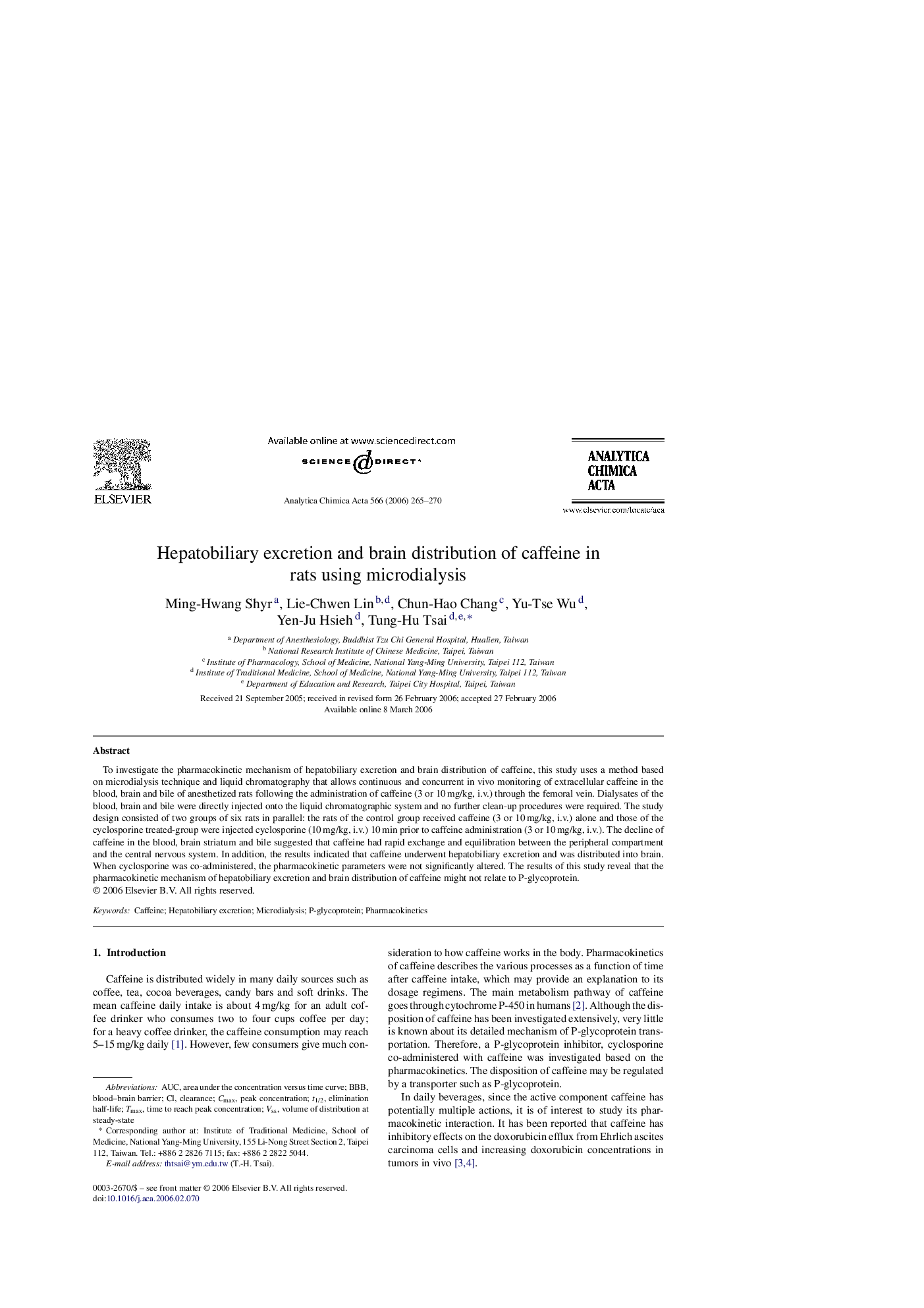| Article ID | Journal | Published Year | Pages | File Type |
|---|---|---|---|---|
| 1171879 | Analytica Chimica Acta | 2006 | 6 Pages |
Abstract
To investigate the pharmacokinetic mechanism of hepatobiliary excretion and brain distribution of caffeine, this study uses a method based on microdialysis technique and liquid chromatography that allows continuous and concurrent in vivo monitoring of extracellular caffeine in the blood, brain and bile of anesthetized rats following the administration of caffeine (3 or 10Â mg/kg, i.v.) through the femoral vein. Dialysates of the blood, brain and bile were directly injected onto the liquid chromatographic system and no further clean-up procedures were required. The study design consisted of two groups of six rats in parallel: the rats of the control group received caffeine (3 or 10Â mg/kg, i.v.) alone and those of the cyclosporine treated-group were injected cyclosporine (10Â mg/kg, i.v.) 10Â min prior to caffeine administration (3 or 10Â mg/kg, i.v.). The decline of caffeine in the blood, brain striatum and bile suggested that caffeine had rapid exchange and equilibration between the peripheral compartment and the central nervous system. In addition, the results indicated that caffeine underwent hepatobiliary excretion and was distributed into brain. When cyclosporine was co-administered, the pharmacokinetic parameters were not significantly altered. The results of this study reveal that the pharmacokinetic mechanism of hepatobiliary excretion and brain distribution of caffeine might not relate to P-glycoprotein.
Keywords
Related Topics
Physical Sciences and Engineering
Chemistry
Analytical Chemistry
Authors
Ming-Hwang Shyr, Lie-Chwen Lin, Chun-Hao Chang, Yu-Tse Wu, Yen-Ju Hsieh, Tung-Hu Tsai,
